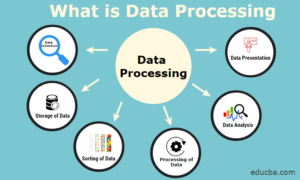Welcome to “Naijaclass Academy” Daily Subscription for Waec Data Processing 2024 Answer

Date: Friday, 3rd May 2024 (Waec Data Processing 2024)
Data Processing (Essay & Objective) 9:30 am – 12:30 pm.
————————————–
DATA PROCESSING
01-10: ABADBBAADA
11-20: BAACBBCCDC
21-30: CBBBDCCDDB
31-40: CDCDACBADC
Completed!!!
2024 WAEC DATA PROCESSING
NUMBER FOUR
(4ai)
(PICK TWO)
(i) Uncontrolled access can lead to the introduction of malware, viruses, or other malicious software onto the network, compromising the security of the school’s systems and data.
(ii) Without proper filtering or restrictions, students may access inappropriate or harmful content, which can be detrimental to their education and well-being.
(iii) Excessive use of bandwidth for non-educational purposes, such as streaming videos or gaming, can slow down the network and affect the performance of educational tools and resources.
(iv) Uncontrolled access may result in the unintentional exposure of personal information or sensitive data, posing privacy risks for students and staff.
(4aii)
(PICK TWO)
(i) Use filtering software to block access to inappropriate websites and content categories, ensuring that students can only access educational resources.
(ii) Install firewalls and robust security software to prevent malware, viruses, and other cyber threats from infiltrating the network.
(iii) Implement bandwidth management tools to prioritize educational applications and limit the bandwidth available for non-educational activities, thus preventing network congestion.
(iv) User Authentication
(4b)
(PICK ONE)
(i) Security
(ii) By requiring authentication, the school can track and monitor user activities, enabling accountability for any misuse or violations of acceptable use policies.
(iii) Personalization
(iv) User authentication helps the school comply with regulations and standards related to data protection and privacy by controlling access to sensitive information and ensuring proper user authentication measures are in place.
========================
(1a)
(i)Access to vast amounts of information for research and learning.
(ii)Facilitation of communication and collaboration among students and teachers.
(iii)Provision of online resources and tools for interactive learning experiences.
(iv)Flexibility in learning schedules and access to online courses and materials.
(1b)
(i) Corrective maintenance involves fixing errors or defects in software or hardware after they have been detected.
(ii) Adaptive maintenance refers to making changes to software or hardware to keep it usable in a changing environment or with new requirements.
(iii) Preventive maintenance aims to prevent issues by regularly updating, monitoring, and maintaining software or hardware to avoid potential failures.
(2ai)
File organization is the way data is stored and arranged in a file system to facilitate efficient retrieval and storage of information.
(2aii)
– Sequential File Organization:
II. Records are inserted one after the other.
– Direct (Random) File Organization:
IV. It generates random key to identify location.
– Indexed File Organization:
I. It does not support the use of tapes.
– Hashed File Organization:
III. It does not generate random keys to identify location.
3a. Personal
II. Mainframe
Iii. Super
3b In tabular format
Analog Computers:
– Use continuous physical phenomena (e.g., voltage, current, position) to represent information
– Process information in a continuous range (e.g., 0-10 volts)
– Typically use analog circuits and mechanical components
– Examples: slide rules, analog clocks, thermometers
– Advantages: fast, simple, and intuitive for specific tasks (e.g., scientific calculations)
– Disadvantages: limited precision, prone to noise and interference
Digital Computers:
– Use discrete values (0s and 1s) to represent information
– Process information in a discrete range (e.g., 0 or 1, true or false)
– Typically use digital circuits and microprocessors
– Examples: smartphones, laptops, calculators
– Advantages: high precision, flexible, and scalable
– Disadvantages: slower than analog for specific tasks, require complex programming
Data processing
6a.
Here are the steps to change the document orientation to landscape and print the document on A4 paper in Microsoft Word:
1. Open the document in Microsoft Word.
2. Go to the “Layout” tab in the ribbon.
3. In the “Page Setup” group, click on the “Orientation” dropdown menu and select “Landscape”.
4. Next, click on the “Size” dropdown menu and select “A4”. This will set the paper size to A4.
5. Once you have changed the orientation and paper size, you can preview the document by going to the “File” tab and selecting “Print”.
6. In the Print preview, you should now see the document in landscape orientation and the full content should be visible.
7. If the preview looks good, you can proceed to print the document by clicking the “Print” button.
ANSWERS IS LOADING…………………





Please I need your help
Ict questions